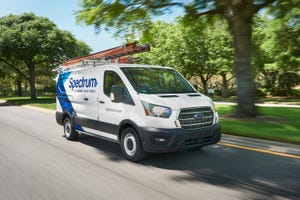New report underscores the amplified role of the hyperscalers in carrier edge deployments
SPONSORED: Heavy Reading's survey results show that CSPs have unquestionably decided to partner with hyperscalers in their multi-access edge computing (MEC) services.

To understand the industry, technology and application evolutions driving edge computing, Heavy Reading conducted a survey in collaboration with Accedian, Kontron and Red Hat. The survey questioned 82 communications service providers (CSPs) that have launched edge computing solutions or are planning to do so within 24 months. One of the drill-downs of the survey was to examine the go-to-market strategies of the CSP and the role the hyperscalers have assumed in those strategies.
Why the hyperscalers?
Hyperscalers have introduced dedicated edge products and embedded their software stack into operator infrastructure, including Internet of Things (IoT) devices and network gateways. They have introduced products dedicated to the telco market, such as Wavelength from Amazon Web Services (AWS), Azure Edge Zones from Microsoft and Anthos for Telecom from Google Cloud. According to Heavy Reading's survey results, their efforts have paid off, as CSPs have unquestionably decided to partner with hyperscalers in their multi-access edge computing (MEC) services. Their rationale for doing so is a little surprising.
When looking at reasons to partner with hyperscalers, it is interesting to examine the two least popular responses first (see figure below). They provide sobering insights: the CSPs are overwhelmingly planning to work with hyperscalers, and they do not expect to save money by doing so.
So why are CSPs partnering with them? The most important reason is ease of deployment. The hyperscaler services mentioned above support telco edge offerings by providing edge computer and storage nodes for the telcos to connect into. "Ease of deployment" is even more important with the largest carriers – with 67% selecting it compared to 49% for smaller carriers. The same enthusiasm comes from carriers that have already deployed MEC; 66% selected ease of deployment as their top reason compared to 50% of those that have not yet deployed MEC. According to the survey, the larger and further along the carrier is on the journey to MEC, the more likely it is to partner with hyperscalers.
The second most popular response – "accelerate service time-to-market" – is also much more important to large carriers and those that have already deployed MEC. Responses from these groups are between 12 and 15 percentage points higher than responses from smaller carriers and those still in the planning stage. The only other reason to partner with hyperscalers showing a statistically relevant difference in responses between segments of the survey base is the "out of region reach." This is, not surprisingly, much more important to smaller carriers and those that have not yet deployed MEC (15 and 19 percentage points higher, respectively).
"Enhanced cloud-based security" is the third most important reason for partnering with hyperscalers, according to Heavy Reading's survey base, with little variation due to CSP size, region or deployment status.
Figure 1: Hyperscalers make it easy  Q: Why do you plan to partner with a hyperscaler to deliver your edge computing? Select up to three. (n=82)
Q: Why do you plan to partner with a hyperscaler to deliver your edge computing? Select up to three. (n=82)
Source: Heavy Reading
The view from the edge
The overall messages that have emerged from Heavy Reading's most recent edge computing survey are that the pivot to improved customer experience is the key goal of edge deployments and that CSPs must clear new paths to achieve this goal. They must do so by
Leaning into automation, particularly in overall lifecycle management.
Building in comprehensive security protections from the design phase forward.
Enhancing performance control through automation and AI. CSPs' growing collaborations with hyperscalers are key to achieving these goals and improving ease of deployment, accelerating time-to-market and enhancing cloud-based security.
Heavy Reading's survey results show that carriers have committed to edge computing and are progressing rapidly with implementations. The deployment of edge computing brings with it issues of scale and complexity. CSPs are most concerned with overall network performance and security. In fact, those companies that have already deployed the edge have a heightened concern about these issues. They are looking for help from their traditional vendor and integrator partners, from their network monitoring and assurance tools and from the hyperscalers.
Read the full report for more edge computing insights To gain more in-depth details on service providers' perspectives on edge computing deployment, download and read the full report now: Harnessing Edge Computing for 2022.
Jennifer P. Clark, Principal Analyst — Cloud Infrastructure and Edge Computing, Heavy Reading
This blog is sponsored by Red Hat.
About the Author(s)
You May Also Like




_International_Software_Products.jpeg?width=300&auto=webp&quality=80&disable=upscale)







